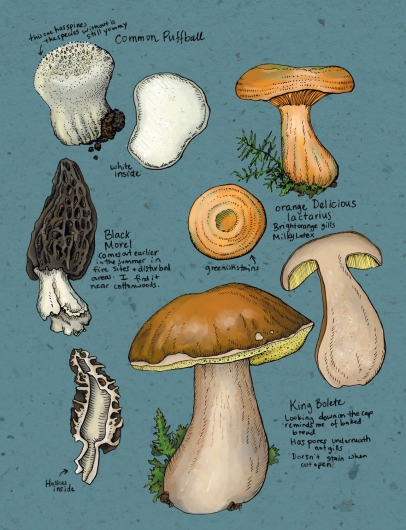Mushrooms for Winter Gatherings
Each summer and fall, I try to enjoy fresh wild mushrooms as much as possible. I sauté some morels with eggs for breakfast or throw some orange delicious into a dinner stir fry. I eat what I can and then dry the rest of my harvest for winter. To dry mushrooms in my off-grid cabin, I slice them and spread on a baking sheet, which I put in the oven at a low temperature (sometimes just with the pilot light if you have one), or I put the baking sheet on top of my woodstove (slightly elevated so it doesn’t get too hot). Once dry, I store the mushrooms in jars, and I try to add a moisture absorbing packet from some other packaged food that I already ate. I check the jars from time to time to make sure the mushrooms stay dry and crisp.
Dried mushrooms are packed with flavor. You can grind them up to mix into seasoning or add them to soups, stews, and sauces, which works well because liquids help them rehydrate. If you didn’t dry a few jars of your own mushrooms this fall, you can also buy dried mushrooms at the grocery store. I recommend porcini and shiitakes.
Some of my favorite mushrooms to forage and dry from interior Alaska include Morels, Orange Delicious Lactarius (better fresh than dried but they do fine as dried food. Bright orange underneath). King Boletes (these are porcini mushrooms, and their Latin name is Boletus edulis). Puffballs (common, giant, and tumbling puffballs are all edible, and dry well. Cut them open and make sure they are white throughout, and not immature gilled mushrooms).
A note of safety: Mushroom varieties can look alike and some are toxic and can even kill you so make sure you are confident with your identification skills, or go with an experienced forager, before you pick and eat them.






